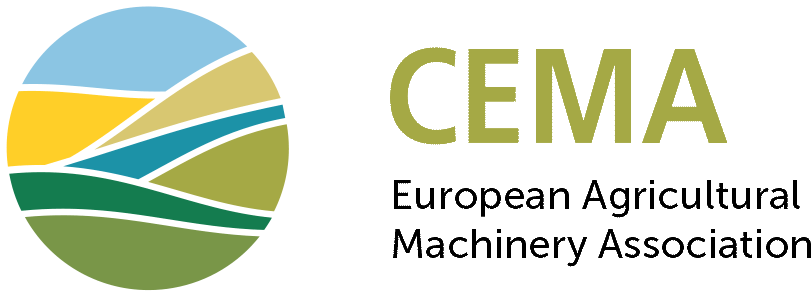The Machinery Regulation (Regulation (EU) 2023/1230) was published on 29th June 2023.
This text replaces Machinery Directive 2006/42/EC. The Machinery Regulation intends to better cover new technologies such as autonomous mobile machinery (robots), internet of things with connected equipment, or artificial intelligence (AI), where specific modules of AI using learning techniques ensure safety functions.
Application:
The new text will enter into force 42 months after its publication, which means 20 January 2027[1]. Exceptions pertain some rules applying to Member States, such as the notification of conformity assessment bodies, definitions of penalties from each EU, etc. There are no transitional provisions between the Machinery Directive and the Machinery Regulation. This means that manufacturers will have to comply with the Machinery Directive until 19 January 2027 and with the new Machinery Regulation as of the following day.
Main changes:
The Machinery Regulation introduces relevant changes, among which:
- Legal status: as a Regulation, the Machinery Regulation provides more harmonisation as well as direct application throughout the EU. Manufacturers will not need to wait for each country’s transposition in national law, which may introduce stronger national requirements.
- New Legislative Framework: the Machinery Regulation follows the principles of the New Legislative Framework, which sets out the main rules for the accreditation of conformity assessment bodies and for the market surveillance framework.
- Paperless: manufacturers can provide product instructions in digital format. If the machine is intended for non-professional users, a paper document containing the main safety information needs to be provided.
- Common specifications: the Machinery Regulation gives rules for the development of common specifications, in case there are issues to develop a harmonised standard for a specific machine.
- Substantial modification: the notion of ‘substantial modification’ is introduced, targeting evolutions/modifications brought out by the final user, and which generate a change of the significant hazards associated with the modified machine.
- Conformity Assessment: the general principle for the conformity assessment of the machinery is self-compliance. Machinery indicated in a list included in the Regulation must undergo validation through notified bodies (external accredited centres). Under the Machinery Directive there was the possibility to apply for self-compliance when an existing harmonised standard covers all its relevant hazards; under the Machinery Regulation this possibility was revoked for some specific machinery or components. In particular, power take-off (PTO) drive shafts and their guards or simply guards to PTOs, when they are placed alone on the market, will need to be validated by a notified body.
- Machine learning: systems containing ‘fully or partially self-evolving behaviour containing machine learning approaches’ are now in the list of machinery requiring the validation by a notified body. The upcoming AI Regulation, when published, will consider these systems as high-risk Artificial Intelligence and impose additional requirements.
- Partly completed machinery will need to comply with the requirements of the Machinery Regulation before they are incorporated in the whole machinery.
Technical Requirements:
The technical requirements are gathered in a specific annex to the Machinery Regulation. Compared to the Machinery Directive, the numbering remains unchanged. Here below is an overview of the main changes.
Protection against corruption/Safety and reliability of control systems: The Machinery Regulation extends the protection against external influences, when they would result in a dangerous behaviour of the machine. This impacts both the protection of the machinery and the behaviour of control systems (cybersecurity). The manufacturer is required to identify key data or key software, the versions of the software installed, the proof of interventions. The upcoming publication of the Cyber-Resilience Act should cover this in detail. On remote controls, a communication or a connection failure must not lead to a dangerous situation either.
Manufacturers of mobile machinery will need to:
- Provide a filtered cab for machines with ride-on driver, when the main use of the machine is the application of hazardous substances. This is typically the case for self-propelled sprayers.
- Provide an audible and visual warning when the seat belt is not fastened on machines presenting a risk of overturning. Additionally, where there is a significant risk of roll or tip over and its restraint system is not used it shall not be possible for the machinery to move.
- Take into account the possibility of contact with overhead power lines. Manufacturers will need to do this firstly with measures to avoid the contact or the creation of an electric arc, and secondly through solutions to prevent electrical hazards in case the contact occurs.
For autonomous mobile machinery, a set of new requirements was introduced:
- The possibility to have a supervisor and a related supervisory function. This role intends to monitor the actions of the robot when it is in autonomous mode. The robot must send information and alerts to the supervisor who has the possibility to stop, re-start the machine in autonomous mode, or to bring it to a safe position.
- The robot must travel safely in a defined working area (also for the automatic charging of the batteries), using either a physical borders or obstacle detection.
Finally, for machines fitted with fully or partially self-evolving logic or behaviour, the risk assessment will need to take into account the behaviour of the machine after it is placed on the market. This measure targets in particular the movement space and the tasks it will perform. The manufacturer will need to ensure good connection between the operator and the machinery, when it comes to communication and to forces used to carry out a task. Finally, the data related to a software of a safety function taking decision will have to be stored each time a decision is taken.
Next steps:
Now that the text of the Machinery Regulation has been published there are two important steps that will follow:
- Development of the Application Guide of the Machinery Regulation, in order to avoid diverging interpretations of the text
- Update of the harmonised standards. Each standard will need at least the addition of an annex making the link between the requirements of the Regulation and the requirements of the standards. The European Commission is working with standardisation instances on a Standardisation Request to officially allow this work.
The full text of the Machinery Regulation can be read in all the official languages of the EU at this link: EUR-Lex - 32023R1230 - EN - EUR-Lex (europa.eu)
[1] Please note that the date originally published in the text was 14th January 2027. This was later amended through the corrigendum which can be read here: https://europa.eu/!xqHng8







